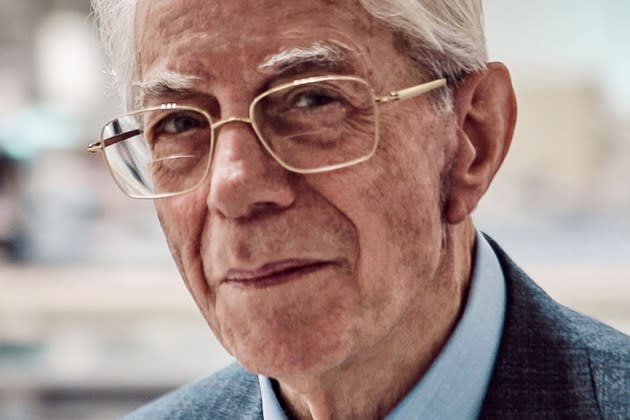Eugenio Canali Dies at 91

MILAN — Eugenio Canali has died aged 91. He was the honorary president of the Italian luxury menswear brand Canali and father of the company’s current president and chief executive officer, Stefano Canali.
He is survived by his wife Anna and children Marco, Paolo, Maria Grazia and Elisabetta, in addition to Stefano. Funeral services will be held Tuesday at 10:45 a.m. CET at the Basilica di San Giovanni Battista church in Monza, a roughly 30-minute drive from both Milan and Triuggio, where Canali was born.
More from WWD
Without disclosing the cause of death, the family and company shared a statement on Sunday to “bid farewell to an extraordinary father, man and entrepreneur” and “an example of determination and optimism.”
“His profound impact on the world of men’s fashion and his tireless commitment in support of ‘Made in Italy’ will be remembered far beyond the borders of the company that his father and uncle founded in 1934 and that he was able to transform into an emblem of Italian sartorial excellence worldwide along with his brothers Giuseppe and Genesio,” read the statement.
“For Eugenio Canali, people always came first. He believed success needed to be built on a base on empathy, equity and respect. His visionary leadership, his wisdom, his dedication to quality and, above all, his ethics will continue to inspire the third generation at the helm of the company and all 1,400 employees he always considered part of the great Canali family,” continued the statement.
Obituaries in Italian daily newspaper Corriere della Sera on Sunday included messages from Camera Nazionale della Moda Italiana, its president Carlo Capasa and honorary president Mario Boselli describing Canali as a “commendable entrepreneur and citizen, who carried his business with success and great passion.” Messages from Ermenegildo Zegna Group’s president, board and collaborators underscored he was a “person with solid entrepreneurial values.”
Canali represented the second generation of the namesake business, which was established in 1934 by Giovanni and Giacomo Canali after they lost their jobs at one of Italy’s leading textile mills during the Great Depression. The founding brothers had a small tailor shop and started to create menswear with about 100 employees until World War II.
After that, the second generation helmed by Eugenio and his brothers carried on the company.
“At the time, I was pleasantly dragged into this world,” recalled Eugenio Canali about joining the business in 1953 in a recent interview posted on the brand’s Anthology website.
“My university studies should have gone in another direction, but at a certain point one of my brothers asked me to join the company. So I enrolled in an economics program. I felt like an adult and it seemed like we needed someone at the company who was interested in numbers, because my father and uncle were quite old at the time,” he added.
Canali recalled starting from scratch, as he wasn’t familiar with the technical details of menswear-making, and that “had to learn quickly from tailors.”
“At that moment, I realized that my studies couldn’t help me in this new adventure and that I would have to quickly learn a series of concepts, which were unknown to me. This made me realize that in life you should never feel as if you’ve made it, but you should keep on learning new things,” said Canali in the interview.
In particular, Canali’s first decision was to pivot the company to the production of high-end raincoats, which he recalled being “a very popular garment at the end of the ’50s…to protect from moisture and cold, and it can be considered an ancestor of today’s sportswear.”
The brand further changed its product offer at the end of the ‘60s, easing into the more formal and sartorial designs it became best known for. In recent years, Canali has increasingly differentiated its offer, presenting lighter, more casual constructions and materials, mixing and matching styles and subtly blurring the differences between formal and informal.
Best of WWD

